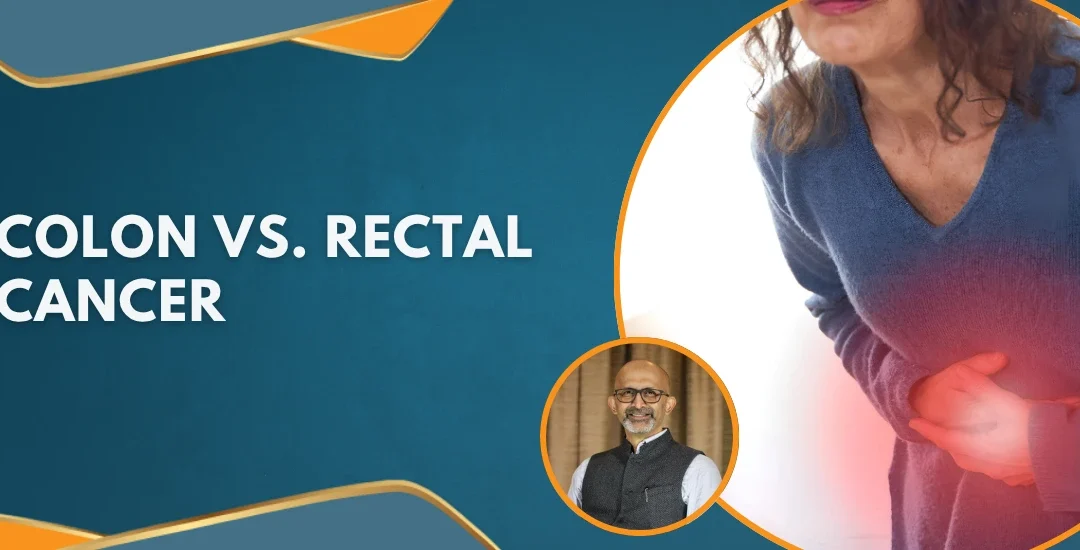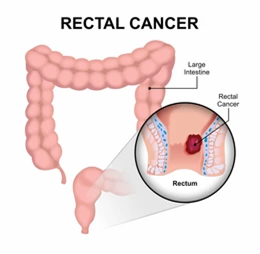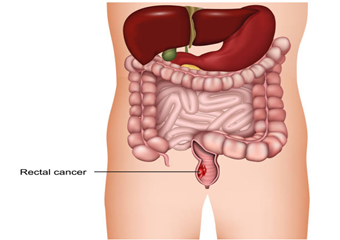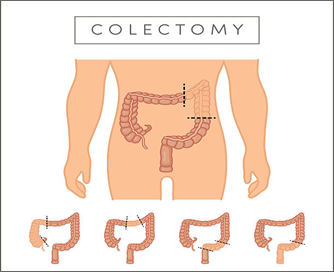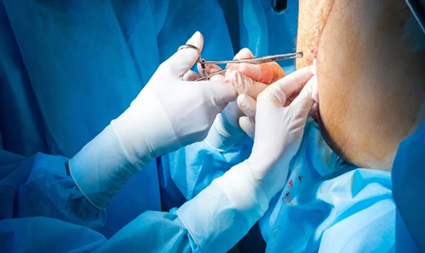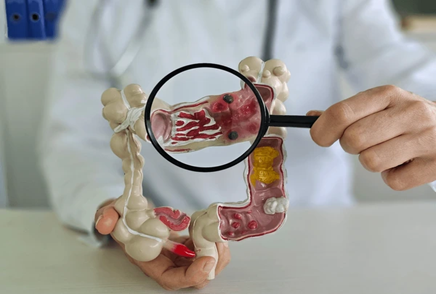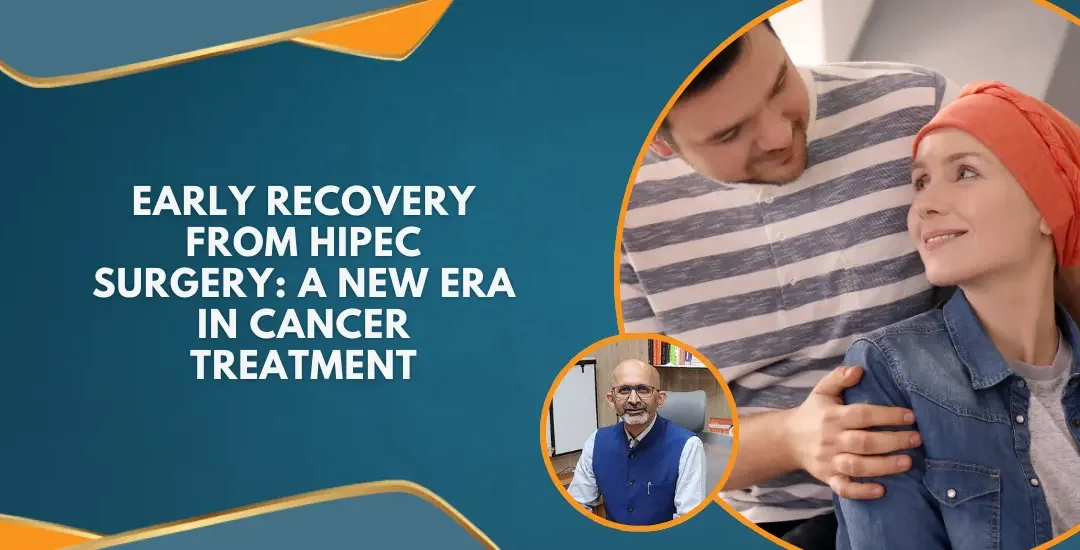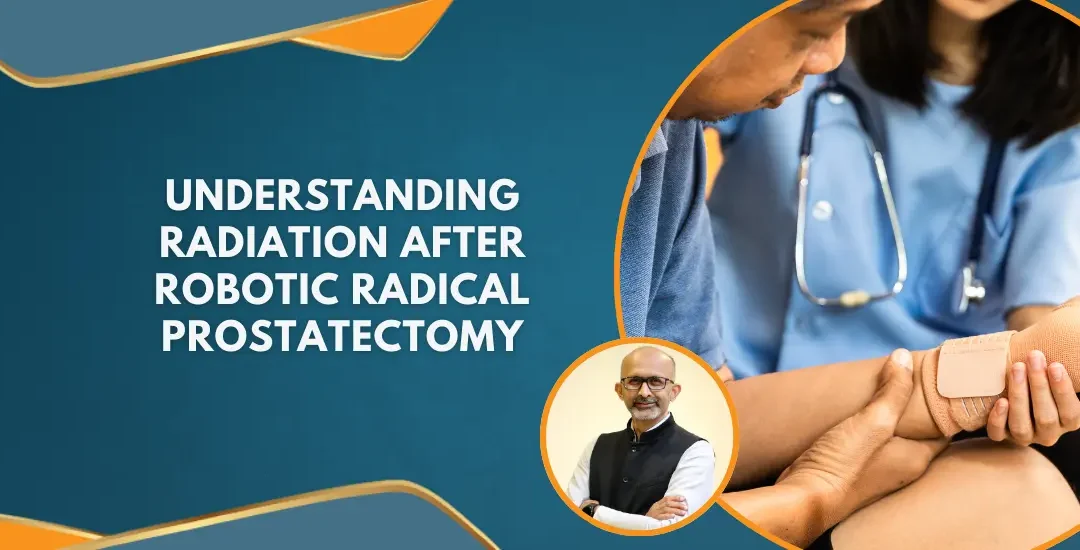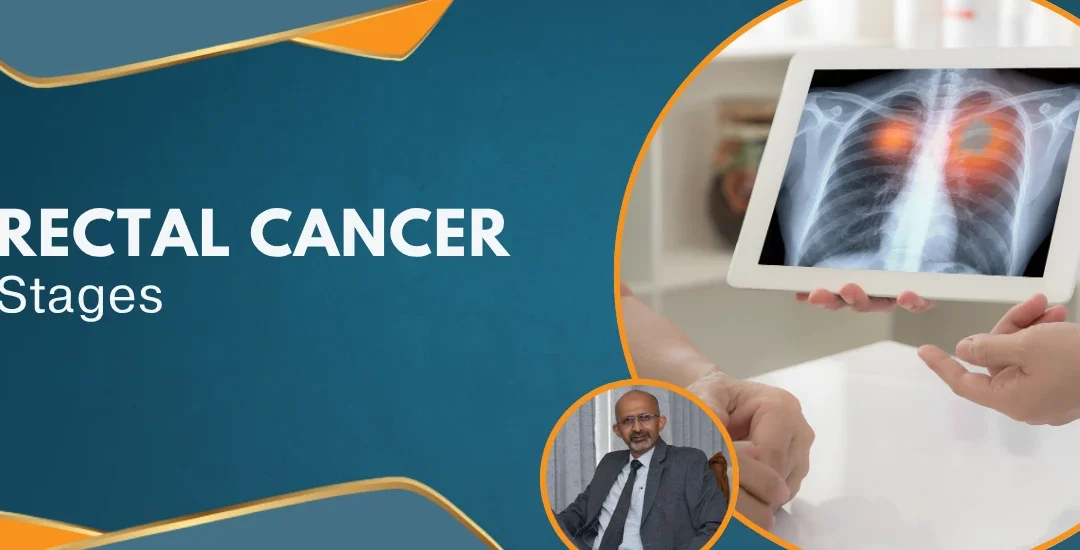
Rectal Cancer Stages
Receiving a cancer diagnosis can be a life-altering moment. For many patients, it raises immediate concerns about survival, treatment options, and what lies ahead. Among the various forms of colorectal cancers, rectal cancer is particularly concerning due to its rising incidence in both younger and older adults.
Globally, colorectal cancer is the third most commonly diagnosed cancer and the second leading cause of cancer-related deaths, according to the World Health Organization. In India, the incidence of rectal cancer is steadily increasing, with lifestyle factors, delayed screenings, and limited awareness playing a role.
“Many people associate rectal bleeding with minor issues like piles (hemorrhoids), but for individuals above 45, it’s important to consider cancer as a possibility. Early detection through routine screening can significantly improve outcomes,” says Dr. Sandeep Nayak, a senior oncologist based in Bangalore, India.”
This page will guide you through the five Rectal Cancer Stages, explain the diagnostic tools used, and help you understand how prognosis varies based on the stage. Whether you are a patient, caregiver, or simply seeking knowledge, this comprehensive guide aims to empower your decision-making with clarity and compassion.
Let’s break it down:
What Is Cancer Staging and Why Does It Matter?

Cancer staging refers to how far the disease has progressed in the body. It helps doctors decide the best treatment approach and estimate a patient’s outlook. In rectal cancer, staging typically ranges from Stage 0 to Stage IV.
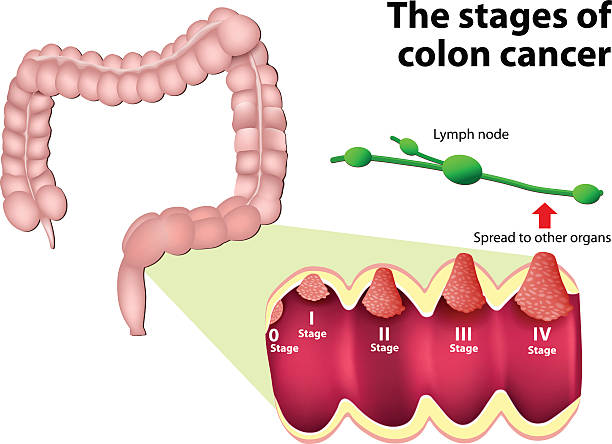
Stage 0 – Carcinoma in Situ
- At this stage, cancer cells are present only in the innermost lining (mucosa) of the rectum.
- The tumor hasn’t invaded deeper layers or spread to lymph nodes.
- Often asymptomatic or detected incidentally during screening.
- Can be removed endoscopically through the anus—no major surgery required.
“Stage 0 rectal cancer is the earliest and most treatable phase. It allows for intervention with minimal surgery and high cure rates,” notes Dr. Nayak.
Here, the cancer has grown beyond the mucosa but hasn’t broken through the rectal wall entirely.
Common Stage 1 Rectal Cancer Symptoms:
- Blood in stool
- Mild changes in bowel habits
- Misdiagnosed frequently as hemorrhoids
Diagnosis usually involves:
- Colonoscopy with biopsy
- MRI or CT scans to evaluate depth
Treatment:
- Surgery alone is typically curative.
- In select cases, radiotherapy is considered before surgery.
At Stage II, the cancer has invaded through the rectal wall but hasn’t reached lymph nodes or distant organs.
Symptoms may include:
- Alternating diarrhea and constipation
- Pelvic discomfort
- Blood in stool
Treatment Plan:
- Neoadjuvant therapy (radiotherapy ± chemotherapy) before surgery
- This reduces tumor size and prevents recurrence
“In Stage II cases, pre-surgery therapy (neoadjuvant therapy) is strongly recommended as it can improve outcomes by reducing tumor size and lowering recurrence risk. When treated systematically, Stage II rectal cancer also has a high survival rate,” says Dr. Nayak.
Now the cancer has spread to nearby lymph nodes. This stage is often termed locally advanced.
Stage 3 Rectal Cancer Symptoms:
- Persistent bowel changes
- Pelvic or abdominal pain
- Rectal bleeding
- Possible bowel obstruction
Diagnosis includes:
- Colonoscopy
- MRI, CT, or PET CT scans for detailed staging
Treatment Strategy:
- Neoadjuvant chemoradiotherapy
- Followed by surgery to remove cancer and affected nodes
“Even at Stage III, the goal is cure. The tumor may be large or aggressive, but with multimodal treatment, long-term survival is possible,” shares Dr. Nayak.
Stage 3 rectal cancer survival rate by age:
- Patients below 60 years often show better recovery outcomes.
- With aggressive treatment, approximately 50–60% of patients may achieve long-term remission.
In Stage IV, rectal cancer has spread to distant organs, such as:
- Liver
- Lungs
- Bones
- Peritoneal (abdominal) cavity
Symptoms depend on spread:
- Abdominal pain
- Jaundice or liver swelling
- Chronic cough (if lungs involved)
- Painful bowel movements or obstructions
Treatment Options:
- Systemic chemotherapy
- Surgery (in select cases) to remove metastases
- Advanced techniques like HIPEC for abdominal spread
“Not all Stage IV cancers are untreatable. If metastases are limited, surgery may be considered to attempt a cure. Although the prognosis is generally poorer, some Stage IV cases with limited lung or liver spread may have improved survival rates after surgery,” emphasizes Dr. Nayak.
Diagnostic Tools for Staging Rectal Cancer
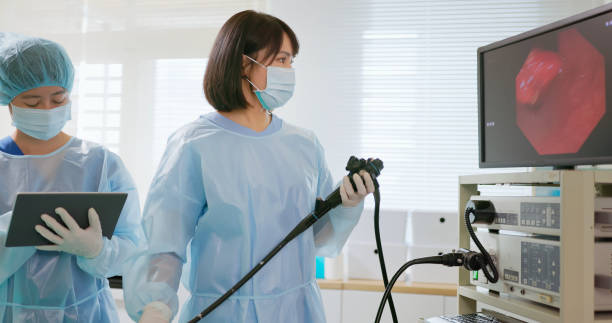
Understanding the extent of cancer helps tailor the treatment. Here are the tools typically used:
Colonoscopy: Visual inspection and biopsy of the rectum
MRI Scan: Provides clear images of local tumor invasion
CT Scan: Detects spread to distant organs
PET-CT: Shows cancer activity across the body
Blood Tests: Includes CEA (tumor marker) and basic panels to assess overall health
“Imaging is not just about detection; it guides our treatment and lets us anticipate complications. Each tool has a role, and doctors often combine them for accurate staging,” Dr. Nayak explains.
Prognosis by Stage – What Do the Survival Rates Say?

The prognosis of rectal cancer heavily depends on its stage at diagnosis. Here’s how it typically breaks down:
Stage 0: Nearly 100% survival rate with endoscopic removal.
Stage I: Over 95% survival rate with surgery alone.
Stage II: Around 80–85% survival rate with combination therapy.
Stage III: Varies based on lymph node involvement, but typically 50–60% survival rate.
Stage IV: About 10–20% average survival rate, but can reach up to 40–50% in select cases where surgery for isolated metastases is possible.
Early screening and timely treatment can significantly improve outcomes, especially for those under 60.
Summary
Rectal cancer staging plays a crucial role in shaping treatment strategies and outcomes. From early-stage localized tumors to advanced cancers that have spread to other organs, each stage presents unique challenges—but also opportunities for cure and control. With prompt diagnosis and expert care, patients can expect vastly improved outcomes, even in higher stages.
Support
At MACS Clinic, we aim to provide patient-centered and comprehensive care. For international patients, the process is designed to minimize the need for multiple visits. Most of the treatment, including diagnosis, surgery, and initial recovery, can often be completed in one visit to Bangalore. Follow-up care is coordinated online or in your home country. Our team, led by Dr. Sandeep Nayak, is dedicated to supporting patients throughout their cancer journey.
Frequently Asked Questions
How is rectal cancer staging confirmed?
Can the cancer stage change during treatment?
Is rectal cancer curable at Stage III?
Does every stage of rectal cancer need surgery?
Is robotic surgery available for all rectal cancer stages?
References:
https://www.mayoclinic.org/diseases-conditions/rectal-cancer/symptoms-causes/syc-20352884
https://my.clevelandclinic.org/health/diseases/21733-rectal-cancer
Disclaimer: Individual results may vary. This information is for educational purposes only and does not substitute for professional medical advice. Please consult a qualified doctor for personalized recommendations.

